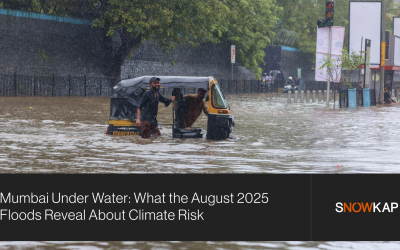Global ESG Rules and Frameworks in 2025
Sustainability managers at mid-size enterprises navigate an evolving landscape of Environmental, Social and Governance requirements. In 2025 a firm grasp of Global ESG Rules and how they connect with regional standards can streamline reporting, reduce compliance risk and inform strategic investments. This post outlines the global baseline, drills into EU and US regulations, shows how to align processes and shares a Snowkap-inspired anecdote to bring it all into focus.
What Is ESG Global?
At its core ESG global refers to high-level principles and standards that transcend borders. These include:
- UN Principles for Responsible Investment (PRI), a voluntary pledge for asset owners and managers
- Task Force on Climate-related Financial Disclosures (TCFD), guidance on climate risk governance and scenario analysis
- International Sustainability Standards Board (ISSB) standards, which establish a baseline for sustainability reporting
Organizations that adopt these global frameworks gain a common language for measuring greenhouse gas emissions, assessing social impacts and disclosing governance practices. Many jurisdictions reference or incorporate them into local law, so understanding them is a first step toward global alignment.
Global & Regional ESG Standards
Global rules set the foundation. Regional and national regulators then layer on requirements tailored to their markets. Here are the most influential standards:
| Region | Standard or Regulation | Who It Applies To |
| European Union | Corporate Sustainability Reporting Directive | Large and listed companies; SMEs in high-impact sectors |
| United States | SEC Climate Disclosure Rule | All SEC-registered public companies |
| United Kingdom | UK Sustainability Disclosure Requirements | Large companies and financial institutions |
| Singapore | MAS Sustainability Reporting Guidelines | Banks and insurers |
| Japan | Corporate Governance Code revisions | Listed companies with enhanced disclosure expectations |
Each region builds on the ISSB or TCFD baseline. The EU’s CSRD, for example, mandates “double materiality,” which means assessing how sustainability issues affect financial performance and how company activities affect people and the planet.
Major ESG Regulations in the EU and the US
EU: CSRD and the Green Taxonomy
As of January 2025 roughly 50 000 European companies must comply with the Corporate Sustainability Reporting Directive. Key features include:
- Double materiality assessment across environmental, social and governance topics
- Mandatory disclosure of metrics such as Scope 1, 2 and 3 emissions, water use and human rights practices under ESRS (European Sustainability Reporting Standards)
- Digital tagging of disclosures to enable machine readability
One mid-size electronics firm in Germany mapped its ERP data sources directly to ESRS metrics. It automated energy consumption uploads from smart meters and linked audit results from key suppliers to social-impact indicators. The result was a 60 percent reduction in manual data entry and a more robust audit trail.
US: SEC Climate Disclosure Rule
The SEC’s rule took effect in late 2023. It requires:
- Climate-related risk disclosures including governance, strategy, risk management and metrics
- Mandatory reporting of Scope 1 and 2 emissions; Scope 3 if material or covered by targets
- Scenario-based analysis to assess resilience under at least two climate scenarios
A cloud-based software provider in California assembled a cross-functional ESG team that integrated emissions data from all facilities into its financial reporting system. The team ran scenario models on energy price volatility and used those insights when negotiating long-term renewable energy purchases.
Understanding ESG Regulations
To build a reliable compliance program for understanding ESG regulations, follow these steps:
- Map Applicability
List all legal entities, relevant thresholds for example, revenue or employee count and industry-specific mandates. - Align Frameworks
Create a matrix showing how each regulation relates to ISSB, TCFD or regional standards. - Perform a Gap Analysis
Assess existing data sources and workflows against new requirements. Identify missing metrics or manual bottlenecks. - Develop a Roadmap
Prioritize quick wins such as automating energy-data collection or standardizing supplier due-diligence questionnaires. - Establish Governance
Assign metric ownership, schedule regular data audits and consider external assurance for the most material disclosures.
This structured approach helps embed ESG into core financial reporting cycles and risk management frameworks.
What Are the ESG Rules?
When you ask What are the ESG rules you are looking at any binding or recommended requirements that shape performance and disclosure. They break down into three categories:
- Hard Law: Binding regulations such as CSRD in the EU or the SEC climate rule in the US
- Soft Law: Voluntary guidelines like the UN PRI or the OECD Guidelines for Multinational Enterprises
- Market Expectations: Reporting initiatives such as CDP (formerly Carbon Disclosure Project) and sector-specific alliances
Navigating all three layers ensures you meet legal obligations, satisfy investor due diligence and stay ahead of emerging market norms.
How to Integrate Global & Regional Standards
Combining global baseline frameworks with regional extensions can seem daunting. Here are tactics to manage complexity:
- Unified Data Model
Build a single source of truth for ESG data and tag each metric with global and regional taxonomy labels. - Modular Reporting Templates
Create core templates for global standards and add regional add-ons. That way you reuse common sections and only maintain one set of region-specific disclosures. - Automated Workflows
Use cloud platforms or scripting to pull data from IoT sensors, HR databases and financial systems into your ESG data warehouse. Automation cuts error rates and frees analysts for insight work. - Regular Training
Host quarterly workshops for finance, operations and procurement teams to review updates in major ESG regulations.
This layered but unified process reduces duplication, improves data integrity and accelerates report production.
In 2025 Global ESG Rules and regional standards form a complex compliance landscape. By mapping requirements, aligning them with global frameworks, automating data flows and establishing clear governance you can navigate major regulations in the EU and the US efficiently. For deeper insights and tailored solutions, visit Snowkap.
FAQs
Q1: How do I know if my mid-size enterprise falls under the EU’s CSRD or the US SEC climate rule?
Start by checking revenue and staff thresholds for CSRD, then verify whether any of your entities are SEC-registered. Mapping your corporate structure against both criteria reveals the obligations you need to meet.
Q2: Can a single platform handle global and regional ESG reporting?
Yes. Modern ESG data platforms let you tag metrics according to multiple taxonomies, apply global baselines like ISSB and layer on regional extensions such as ESRS or XBRL labels. This approach minimizes manual reconciliation.
Q3: What level of assurance should we aim for?
External assurance is increasingly expected, especially for emissions and governance disclosures. Limited assurance for Scopes 1 and 2 is often the minimum. As regulations tighten, full assurance may become standard practice.



